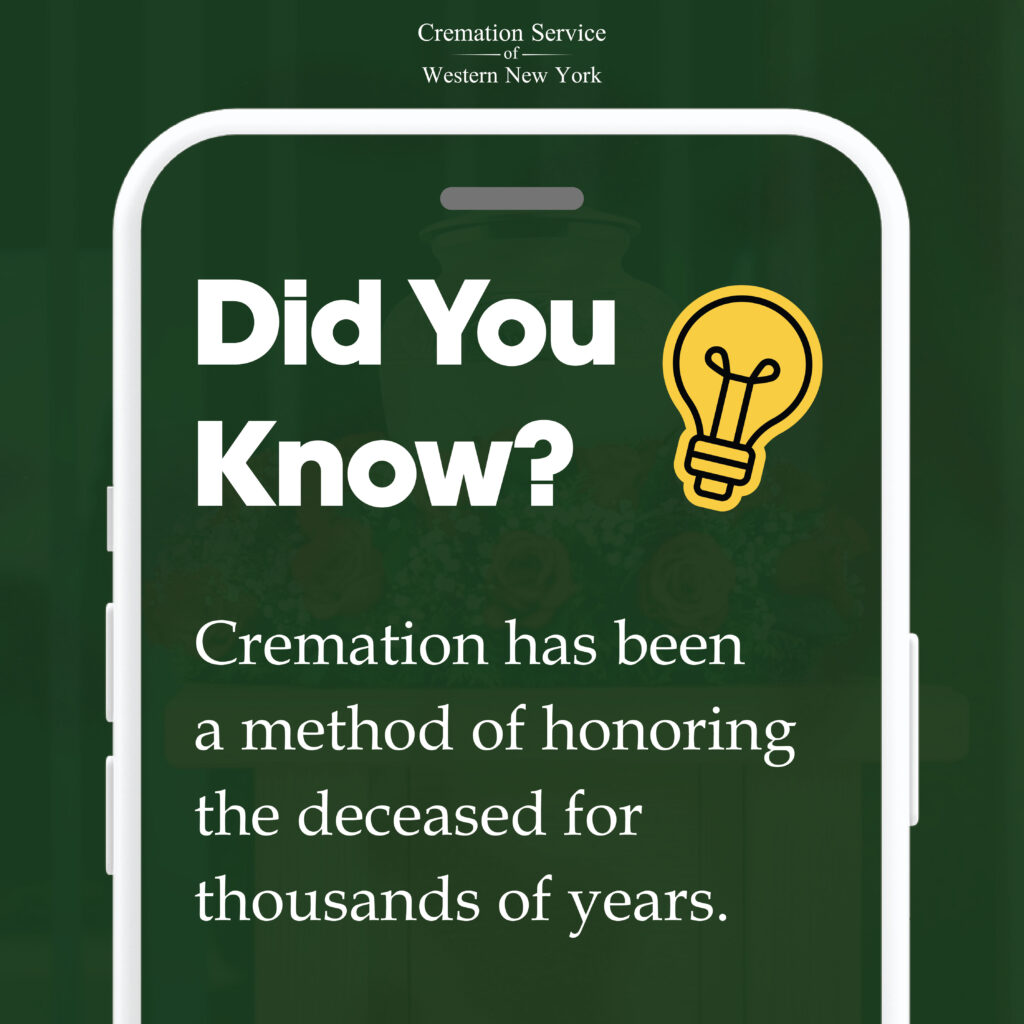
Cremation, the process of reducing a body to ashes through heat, has been a significant method of honoring the deceased for thousands of years. Although often perceived as a contemporary alternative to traditional burial, cremation has a rich and varied history spanning different cultures and epochs. This blog aims to explore the evolution of cremation, its cultural and spiritual significance, and its journey from ancient practices to modern acceptance.
Early Beginnings of Cremation
The roots of cremation trace back to the early Stone Age, around 3000 B.C., in Europe and the Middle East. Early humans began cremating their dead, leaving behind ashes and bone fragments as evidence of this practice. By the late Stone Age, cremation had spread, with decorated pottery urns discovered in Northern Europe and Western Russia.
In ancient Greece, cremation became a prevalent custom, particularly for soldiers who died on the battlefield. It was considered a purification process that allowed the soul to embark on its journey to the afterlife. The Greeks viewed cremation as a means of freeing the soul’s energy from the physical body and ensuring spiritual purification.
The Romans adopted cremation primarily for practical reasons, such as space constraints and hygiene. With an expanding population, cremation provided a more efficient means of disposal for the deceased, enabling sustainable use of land resources. Additionally, it eliminated the potential spread of diseases from burying bodies in the ground.
Transition to the Middle Ages
As Christianity rose to prominence, cremation fell out of favor in the Western world. Early Christians, influenced by Jewish traditions, favored burial due to beliefs in bodily resurrection. By 400 A.D., cremation had become taboo, and burial became the norm. During times of war and epidemics, however, cremation was still used for practical reasons to manage large numbers of deceased individuals.
Outside the Western world, cremation continued to be seen as honorable. In India, Hindus practiced cremation as a way to set the soul free, while in Tibet, it was reserved for the highest lamas. In Laos, only those who had lived peaceful and prosperous lives were cremated.
The Modernization of Cremation
The late 19th century marked the revival of cremation, driven by sanitary concerns and urban space limitations. In 1873, Italian professor Lodovico Brunetti unveiled the first modern cremation chamber at the Vienna Exposition. His invention provided a controlled environment for the cremation process, addressing concerns regarding hygiene and public health.
Cremation societies began forming in Europe and North America, advocating for cremation’s benefits, such as cost-effectiveness, conservation of land, and simplicity. Notable figures, including Queen Victoria’s surgeon Sir Henry Thompson, promoted cremation as a sanitary practice. By 1913, there were 52 crematories in North America, and the number continued to grow.
Global Practices and Cultural Variations
Cremation practices vary significantly across cultures. In Hinduism, cremation is a mandated funeral service, believed to help the soul move on and facilitate rebirth. Open-air pyres along the Ganges River are a common sight in India. In Japan, cremation is a widely accepted practice, with modern crematories providing personalized services. Scandinavian countries, including Sweden, also have a long history of cremation, often combining it with traditional rituals.
Religious beliefs have significantly influenced the acceptance of cremation. While Hinduism and Buddhism favor cremation, Christianity, Islam, and Judaism have historically preferred burial. However, modern attitudes are evolving, with some branches of Christianity becoming more accepting of cremation.
Modern personalization of cremation allows for creative memorials, such as transforming ashes into jewelry, art, or even incorporating them into living memorials like trees. These options provide meaningful ways to remember and honor loved ones.
Contemporary Trends and Technologies
Recent trends in cremation include eco-friendly options like water cremation (alkaline hydrolysis), which uses water and potassium hydroxide to reduce the body to its basic elements. This method is considered more environmentally friendly than traditional cremation.
Direct cremation, where the body is cremated without a preceding ceremony, is becoming increasingly popular due to its simplicity and affordability. Technological advancements have improved the efficiency and environmental impact of cremation processes, making it a more accessible option.
Conclusion
From its ancient roots to modern technological advancements, cremation has evolved to become a widely accepted and meaningful method of honoring the deceased. Understanding its rich history and cultural significance allows us to appreciate the cremation options available today. As societal norms continue to shift, cremation is likely to remain a preferred method of disposition, reflecting both practical considerations and evolving cultural values.






 Cremation Service of Western New York can provide you with answers to many commonly asked questions about cremation. Our goal is to provide detailed comprehensive information regarding cremation and the services we can provide for you.
Cremation Service of Western New York can provide you with answers to many commonly asked questions about cremation. Our goal is to provide detailed comprehensive information regarding cremation and the services we can provide for you.